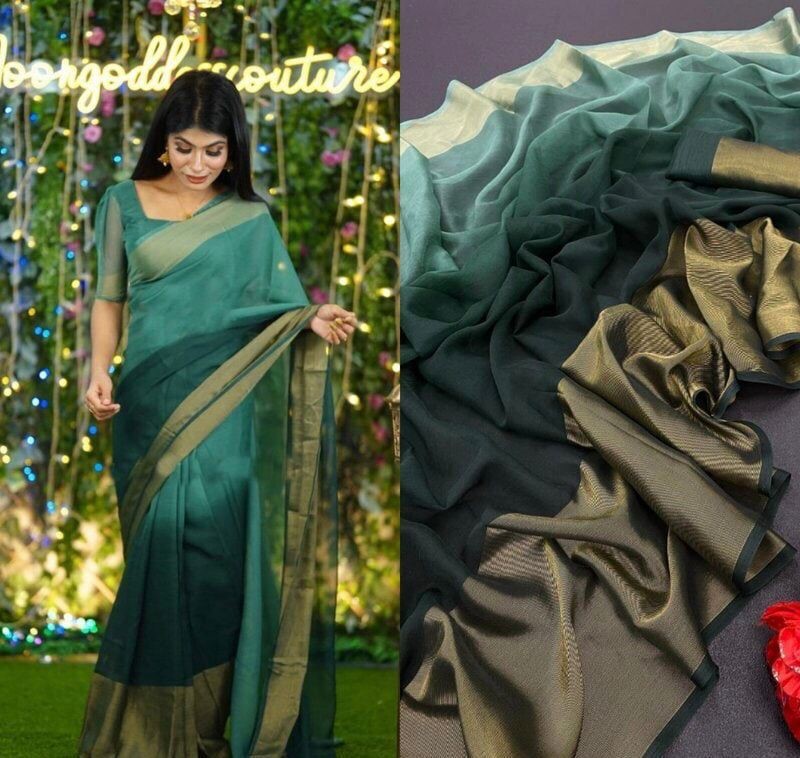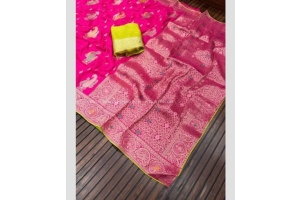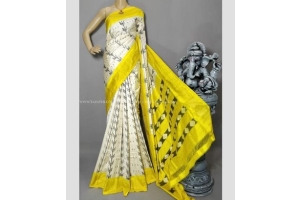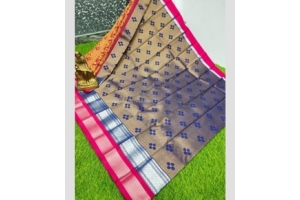Why are Kuppadam Pattu Sarees so well-liked, and how can you verify their authenticity?


Being the owner of a Kuppadam Pattu Sarees is like being the owner of a valued possession, both literally and emotionally. Any lady who wears a Kuppadam Pattu Sarees angelic at any celebration, and if you picked one for your wedding day, it is assumed that that regal item of clothing will have a particular place in your heart all of the time.
Even though you may be eager to own a Kuppadam Pattu Sarees, it will need some thought on your part to get a real one. Nothing shiny is gold. Similar to how not every glistening, delicate, and alluring saree would be a Kuppadam. Finding an original can seem like a daunting job in a world filled with duplicates. Don't worry, though; we'll go over a few criteria you may use to determine whether a saree is made of genuine Kuppadam silk. Before we go there, let's look at why Kuppadam Pattu Sarees are so popular.
The patterns and hues of Kuppadam sarees are charming:
The Kuppadam Pattu Sarees have an exceptional warp and weft weave. Its weaving lends a seductive appeal to the Kuppadam saree's overall promise of being a masterpiece. You have an amazing variety of hues to pick from, ranging from vivid corals to blues, reds, greens, and pinks. Unlike other traditional and cultural sarees, Kuppadam sarees lack all-over designs and prints. They are unusually appealing because of their straightforward body weaving.
Kuppadam sarees are adaptable for every situation:
With their distinctive blends and colour scheme, Kuppadam Pattu Sarees can be worn on any occasion, whether it be a cocktail party, formal workplace party, the holiday season, or wedding antics. The combination of a shimmering Zari border and a light silk cotton fabric gives this saree a unique edge in terms of look. Choose from the many colours that this saree offers and keep them on hand in your closet to go with your various saree moods.
Being a lightweight blend, it is suited for everyone:
Your skin can breathe without becoming overly constrictive thanks to the Kuppadam Pattu Saree’s body of silk cotton. In our country's generally humid climate, they are lightweight and provide a breeze-like feeling. Additionally, the saree's soft texture clings to the contours of your curves without catching, giving you the ability to present a seductive yet refined appearance at once.
Kuppadam sarees are unmatched in their opulence:
The Kuppadam Pattu Sarees border and body are weaved differently, did you know that? Then they are attached using a technique called korvai weaving, which combines the elegance and appeal of cotton silk with the glitz and lustre of pure silk zari. The Kupaddam saree is unmatched in its promise of elegance and royal status. It's neither too formal to wear to a wedding celebration nor too casual to wear to more informal events. Everything about it is a masterpiece.
How to verify the authenticity of your silk sarees:
Understand zari:
Despite being made of just pure mulberry silk, Kuppadam Pattu Sarees can have zari in a variety of forms, including pure zari, half-fine zari, fast zari, and counterfeit zari. Depending on the kind of zari used, the price of the zari varies.
A foundation strand of silk is used to create real or pure zari, which is then woven with pure silver and electroplated with pure gold. Silver-plated copper wire is wrapped around a silk yarn to create a half-fine zari. After that, it is gilded to give it a golden hue. Gold is electroplated onto the copper wire in tested zari. Fast zari uses polyester yarn that has been lightly gilded with copper and trace amounts of silver. By covering threads in a gold-coloured powder, imitation zari is created.
It is challenging for even a trained individual to tell one zari variety from another because there are so many that nearly resemble one another. Pure zari sarees are shiny and brightly reflective to the touch, and they are soft and smooth to the touch. When touched, the tested zari sarees feel a little stiff and don't flow as smoothly as the puri zari sarees. You can always ask the lead salesperson if you are unsure of the distinction.
Because copper is more affordable than silver, half-fine zari sarees are more affordable than pure zari sarees. In addition, they come in a wider range of tone options than pure zari sarees. Zari that hasn't been thoroughly tested doesn't tarnish. Sarees made with imitation zari or powder zari tend to fade or become black after a few times of washing.
Considering physical characteristics:
Three strings of silk fibre are used to create a pure silk saree, adding weight to the garment. Its weight can range from two kilogrammes to more, depending on how much zari is used. A Kuppadam Pattu Saree’s unmatched sheen is a significant factor in its appeal, and it wouldn't be an exaggeration to say that this is true. Contrary to manufactured silk, which always has a plain white sheen regardless of the angle of the light, a pure silk saree appears to change colour when the light shining on it is angled differently.
The saree contains minor flaws due to the traditional weaving process. Every saree has its own set of flaws. It is constructed individually and then woven together in a tight weave known as "korvai" since the body, border, and pallu are all different colours. An obvious zigzag pattern at the body and pallu's intersection indicates this distinctive characteristic.
Burn test:
Silkworms are used to produce silk. It is therefore proteinaceous by nature, just like human hair. The scent of burnt hair can be produced by burning a few authentic silk strands, whereas burnt plastic can be produced by burning fake imitations. Additionally, silk extinguishes the instant it is removed from the flame and continues to burn as long as it is in contact with the flame. Silk substitutes that are made of artificial materials keep burning even after being taken away from the flame.
Crushing burnt silk between your thumb and index finger also produces powdery ash, however doing the same with non-burnt silk results in an impermeable ball of burnt residue.
Indicator of silk:
In India, a certification mark for textiles made of pure natural silk has been advocated by the "Silk Mark Organization of India." The hangtags and the fabric itself both contain the logo. When purchasing sarees with hangtags, you should use cautious because they are more prone to copying. The hologram and one-of-a-kind number are both printed on each label. This aids in defending the interests of both consumers and manufacturers.
You may find the greatest solutions at Tapathi E-Commerce for all your Kuppadam Pattu Saree needs. While guaranteeing you a hassle-free and trustworthy experience with their services, they provide the best pure silk sarees available.








